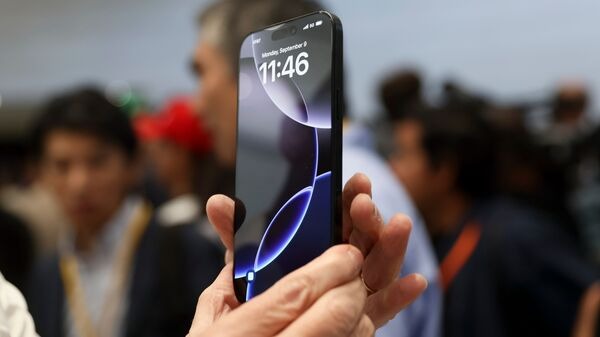Recent reports from the UK reveal widespread frustration among Apple users as an alarm glitch left countless individuals stranded and disoriented during their morning routines. For many, the alarm feature on their iPhones is a trusted tool, ensuring punctuality and smooth starts to busy schedules. However, this glitch has thrown those plans into disarray, resulting in missed appointments, delayed work commutes, and an outpouring of complaints from affected users.
The issue has sparked significant attention on social media and various online forums, with users describing their experiences and seeking solutions. It appears the problem stems from a software update that inadvertently disrupted the functionality of the alarm app on certain iPhone models. This unexpected bug has caused alarms to either fail completely or remain silent, leaving users confused when they wake up later than intended.

Many iPhone users in the UK rely heavily on their devices for managing their daily routines, including alarms, calendars, and reminders. The alarm glitch has highlighted how intertwined smartphones have become with daily life and how even a minor disruption can lead to considerable inconvenience. For some, the consequences were merely an inconvenience, but for others, it resulted in more serious disruptions, such as missing flights, being late to critical meetings, or even jeopardizing medical appointments.
The glitch seems to have surfaced following Apple’s latest iOS update, which introduced various new features and performance enhancements. While software updates are generally aimed at improving functionality, they occasionally come with unintended side effects. This incident has underscored the importance of thorough testing and quality assurance in software development, particularly when it concerns features that users depend on for essential daily tasks.
Reports suggest that the alarm glitch affects specific models of iPhones running the latest version of iOS. Users have noted that while the alarm appears to be set correctly, it either fails to activate at the designated time or remains silent when it does. This behavior has led to widespread confusion, as users initially assumed the issue was related to their personal settings or device hardware. However, as the number of complaints grew, it became clear that the problem was more widespread.
One of the challenges users face is the lack of a clear workaround or immediate fix. Some have resorted to using third-party alarm apps or relying on traditional alarm clocks as temporary solutions. Others have attempted troubleshooting steps such as restarting their devices, resetting alarm settings, or reinstalling the iOS update, but these measures have yielded mixed results. The inconsistency of the glitch has only added to the frustration, as users struggle to identify reliable solutions.
Apple has acknowledged the issue and confirmed that it is working on a fix. In a brief statement, the company expressed regret for the inconvenience caused and assured users that a software update addressing the glitch would be rolled out soon. While this response has provided some reassurance, it has not entirely alleviated the concerns of users who remain wary of relying on their iPhone alarms in the meantime.
The table below summarizes the key aspects of the alarm glitch and its impact on users:
| Aspect | Details |
|---|---|
| Affected Devices | Specific iPhone models running the latest iOS version |
| Nature of Glitch | Alarms failing to activate or remaining silent |
| User Impact | Missed appointments, delayed commutes, and disrupted routines |
| Temporary Solutions | Using third-party alarm apps or traditional alarm clocks |
| Company Response | Apple has acknowledged the issue and is working on a software update |
The alarm glitch has also reignited discussions about the reliability of technology in everyday life. While smartphones offer a wide array of convenient features, incidents like this remind users of the potential vulnerabilities and limitations of relying too heavily on digital tools. For some, the glitch has prompted a reevaluation of their dependence on smartphones, leading them to explore alternative methods for managing their schedules.
In addition to the practical inconveniences caused by the glitch, the situation has raised broader questions about Apple’s approach to software updates and quality control. The company is renowned for its commitment to user experience and innovation, but this incident has highlighted the challenges of maintaining those standards in the face of increasingly complex software ecosystems. Critics have pointed to the alarm glitch as an example of why companies like Apple must prioritize thorough testing and user feedback during the development process.
For users affected by the glitch, the immediate focus is on finding reliable solutions to ensure their alarms function correctly. Many have turned to online communities for advice and support, sharing tips and troubleshooting strategies. While these forums have provided valuable insights, they have also revealed the extent of frustration and dissatisfaction among users.
The alarm glitch is not the first time Apple has faced criticism over software issues. Previous incidents, such as the infamous “batterygate” controversy and various app-related bugs, have drawn scrutiny to the company’s quality assurance practices. However, Apple has a strong track record of addressing such issues promptly and implementing measures to prevent recurrence. Users are hopeful that the company’s response to the alarm glitch will be similarly effective.
In the meantime, the incident serves as a reminder of the importance of backup systems and contingency plans. For tasks as critical as waking up on time, relying solely on a single device or app may not always be sufficient. Users are encouraged to explore alternative options, such as setting multiple alarms on different devices or using standalone alarm clocks, to mitigate the impact of similar issues in the future.
As Apple works to resolve the glitch, the company is likely to face ongoing scrutiny from both users and industry observers. The incident underscores the delicate balance between innovation and reliability, highlighting the challenges of delivering cutting-edge features while maintaining the stability and dependability that users expect. For you, the key takeaway is the importance of staying informed and prepared, ensuring that you can adapt to technological disruptions and maintain control over your daily routine.










Add Comment